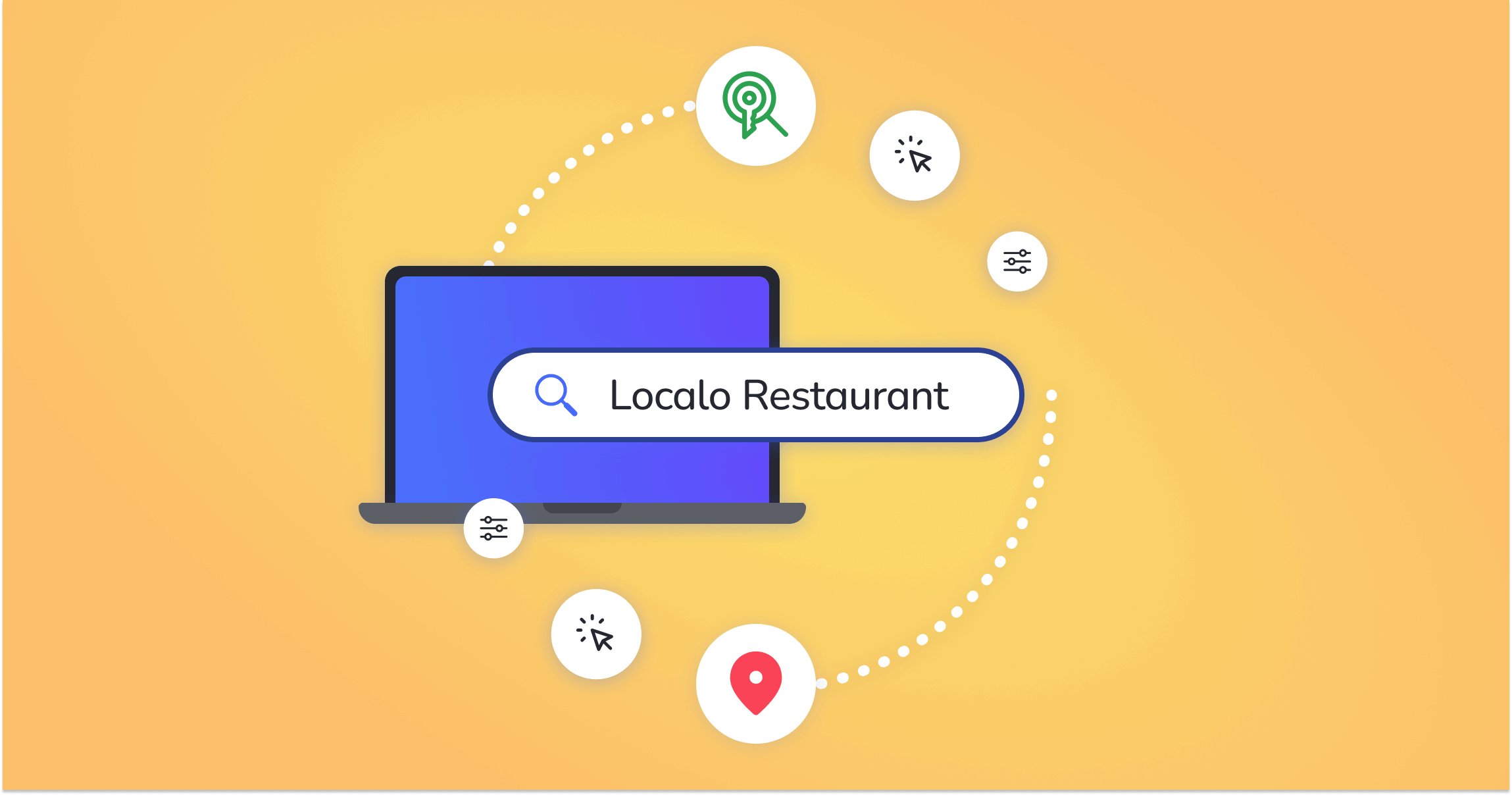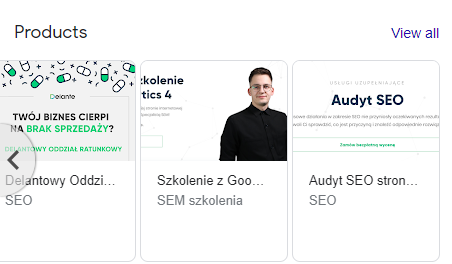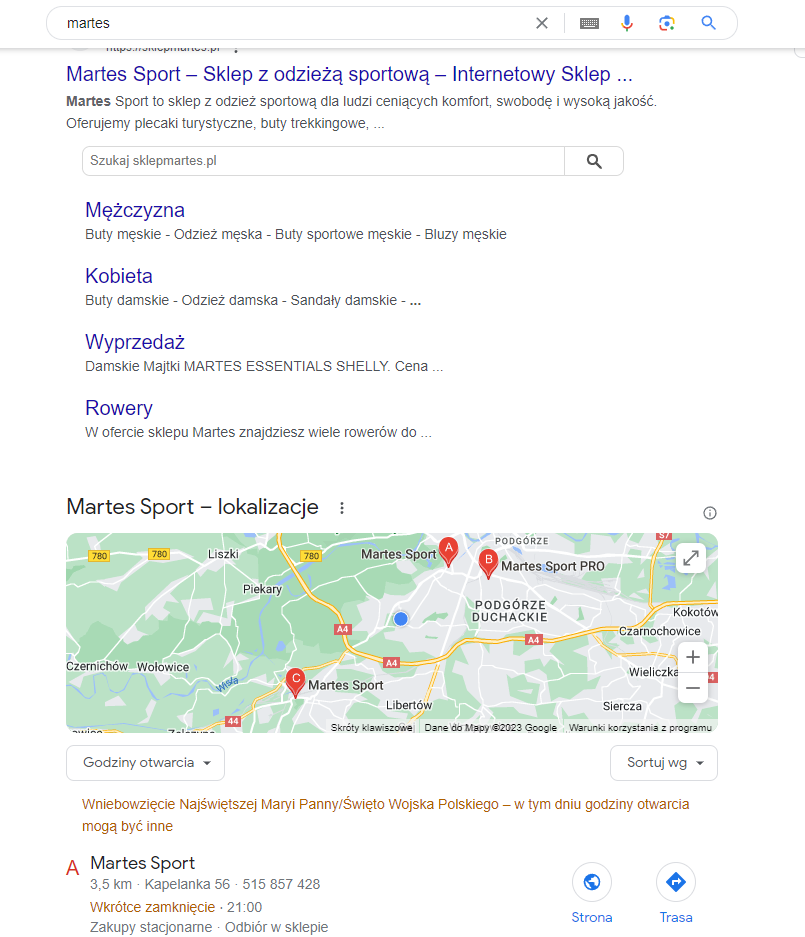Last updated 12/12/2025
Local SEO vs. traditional SEO – comparison and differences.
Check out the comparison written by one of the best SEO agencies in the country and choose a strategy for your business.
Last updated 12/12/2025
Check out the comparison written by one of the best SEO agencies in the country and choose a strategy for your business.

Do you run a local business? Or is it your dream to gain national (maybe even international) recognition? In both cases, SEO is the key to success, although obviously not the only one. It would seem that SEO is still SEO and that in either case, you can just apply a scheme and carry on with the process as you always have. Obviously, that is not the case. There is (or should be) always a strategy behind SEO. And in the case of local SEO, it is targeted at a specific area. The elements of the process of traditional SEO and local SEO are very different, so I want to introduce you to the topic: Local SEO vs. traditional SEO - comparison and differences.
According to a report published by Ibotta, more and more consumers prefer buying online than in-store. What’s more, this trend progresses, as younger and younger generations become consumers that are able to spend money in a way they want to. This begs the question: Does it make sense to advertise locally at all, and who should benefit from such a form of advertising?

Source: Ibotta (2018)
The answer is simple: if you have a business that relies on a local audience, you should invest in marketing channels for local activity - including SEO. But that is not the only reason. After the pandemic, we slightly forgot that there is such a thing as omnichannel communication. Companies focused on building online businesses because that was the only way to survive at the time. That time has now passed, and may it never return. But have companies gone back to the bricks-and-mortar world?
More and more companies, large and small, are reinvesting in local operations. A number of industries have also started to recognize the increased potential of this and are planning to expand their operations into a wider geographical area. Of course, it all depends on the industry and consumer behavior, but even though statistics show that less and less of us buy offline, it’s still a high percentage that shows it’s worth investing in this revenue stream.
Of course, SEO is one of the most fundamental tools in the inventory of the marketer. But it won’t be that effective, if you want to bring more clients to your brick-and-mortar business.
Positioning in the traditional sense and local positioning have the same goal - to improve the position and visibility of your business in search results. Both methods are designed to help you attract more customers to your business and make you easier to find online.
What is the difference? Traditional SEO focuses on improving the visibility of your website either nationally or globally, while local SEO focuses on improving the visibility of your business in local search rankings. You don’t even need to have your own website (not recommended) to appear in search results! General SEO and local SEO make use of many of the same strategies, but in the case of local SEO, these are specific methods that will help you to interact with searchers in your local area.
Traditional SEO is aimed at a much broader audience, and the user can come to you with both the intent to find information and the desire to make a transaction. With local SEO, the user’s intent is informational, but SEO companies point out that if the user is interested in a local business, then the likelihood of conversion (using a service / buying from a brick-and-mortar business) is high.
Typical queries with local intent can be broken down into
These types of modifiers allow you to filter search results based on either the location you enter or the location you share.

Google has also been applying neural matching to local queries for several years, meaning that the search engine itself “suggests” that the query has a local basis. Below is an example of typing the word “restaurant” in the suburbs of Wroclaw. The results show the nearest restaurants where you can go out to eat, although the phrase typed into Google does not suggest that they should be restaurants “near me”.

An important difference between local SEO and general SEO is competition. In the case of general positioning, this is a much more significant issue than in the case of local SEO. General positioning refers to the pursuit of a high position in search results nationwide, which means competing against multiple competitors operating in different regions. This can be more difficult due to the bigger geographical area and more diverse audience.
On the other hand, local positioning aims to achieve high visibility in search results for a specific geographic area, such as a city or region. There is less competition in this case, as it consists of companies operating in the same area. This makes it easier to tailor the strategy to the needs of the local market and focus on gaining trust among local customers.
This is a very often overlooked aspect when creating an SEO strategy, and it’s where you should start. Local audiences can be a particular clientele. It is enough to analyze the cultural differences between Silesia and other regions in Poland. This alone shows us that tailoring SEO activities to the audience will be extremely important.
For example, phrases, dialect, or traditions unique to Silesia(an area in Poland with some German influences) may require a different approach to content optimization, keyword usage, or website communication. Adapting your SEO strategy can increase engagement with local users and improve their understanding of your offerings.
A perfect example is the gryfnie.com store, which did a great job of introducing dialect to the site, as you can see in the screenshot below.

Source: https://gryfnie.com/sklep/produkty/bonclok-na-logorki-edycja-limitowano-2094
Moreover, taking into account local cultural preferences, customs, or geographic circumstances, a content marketing strategy can be tailored. Creating content related to local history, events, or issues can build a bond with your audience and capture their attention.
Analyzing cultural differences and keeping abreast of current trends and topics will allow you to adjust your SEO and content marketing strategies more effectively. This will also show that the company is interested in and aware of the needs of local customers.
In the case of general positioning, caring about the cultural aspect and the local community is less important.
General SEO and local SEO will differ in content strategies. For local SEO, content must be tailored to a specific geographic area. Keywords typically include place names, regions, and local terms. It is important to include location-specific information such as addresses, phone numbers, opening hours, and other details useful to local users. Content should focus on solving local community problems and providing tips or information about local events or news.
In content strategies for companies positioning themselves nationwide, the priority is to create comprehensive content that will attract the attention of diverse audiences from different regions. Here, keywords are often generic phrases that are popular on a global scale. Content should be appropriately elaborate and comprehensive and cater to a wide range of user needs.
The link building strategy for local and general SEO differs significantly. In the context of local SEO, it is crucial to focus on gaining links from local sites related to a specific geographic area.
Off-site activities for a local site should include:
On the other hand, in the case of general SEO, there is more competition, so you need to approach link building more comprehensively and use, for example, Guest Posts, publications on sponsored portals, Social Media, or cooperation with influencers.
Interestingly, according to the latest research by link building provider Editorial.Link, 55.2% consider link building the most challenging part of SEO.
In short, these are businesses whose products or services can’t be ordered online or whose delivery from the other end of the country is not an option. After all, you won’t go to a hotel in Warsaw online or order fish and french fries from London to Paris with delivery in less than an hour.
What’s more, local promotion is more likely to be used by businesses whose services we need ASAP or which, by legal restrictions, cannot be handled online - such an example is any document that requires notarization. Another example is business related to medicine or cosmetology - you won’t benefit from them online successfully. There are more examples: real estate, industry, repair, etc.
In fact, almost all B2C services will be based on a local positioning strategy. A solid example of an industry operating locally is the tourism industry: hotels, attractions, etc.
One of the common issues, obviously, is website SEO. Local businesses most often also have a local page. Even though many searches will stop at the “looking for a certain thing in Google Maps” stage, it is worth ensuring that your site is also visible in your Google Business Profile.

The SEO process, in this case, is similar to national SEO. The most significant difference is in the use of keywords. In general SEO, you will focus on the positioning of general phrases (without location), whereas in local SEO, you will ensure that you are visible in certain area. A notary advertising in Wroclaw should have all the typical elements of SEO optimized for Wroclaw-related keywords. This:

It does not work optimally.



The Google Business Profile will be essential for both general and local SEO. For local SEO, however, optimization is crucial. This is because many local searches end up on the Business Profile.
If we look for the nearest dentist in Krakow, we will find all the information in the search results. There is no need to go to the website at all. Especially if we have a situation that requires a rapid intervention. All the information we need to contact and visit the facility is right there in Google Business Profile.

Therefore, it is not unimportant to position the Google Business Profile itself in such a way that your place appears as high as possible in the “Places” section.
SEO Maps or business card optimization is not just about Google! It is important to remember that the strategy should also apply to other search engines such as Bing, Yandex, and Safari. Each of these search engines has its own algorithms, limitations, and capabilities. Still, in each case, a couple of optimization elements will improve visibility in organic search results.
The main factors are:





Of course, it can! There are many examples of businesses that operate both nationally and locally. They will, accordingly, use both local and national search engine optimization.
The best example is online shops with physical stores, such as the Martes(a chain of sporting goods stores in Poland), which effectively operates in both areas, recognizing the potential of local and online sales. Such omnichannel activities are returning to the strategy of many companies after a period of pandemic.

Using both strategies allows you to fully take advantage of the market’s potential, regardless of its size. However, it is worth remembering that each strategy requires proper adaptation and analysis of effectiveness. This, in turn, can lead to continuous improvement and optimization of SEO activities, which will bring much better results in the long run.
SEO strategies, both local and national, are essential tools for modern businesses. When deciding on the right strategy, it is worth considering the characteristics of the industry, local customer preferences and market potential. Of course, there is no clear-cut answer as to which strategy is best, as many companies can use both simultaneously, adapting them to their objectives and operating context.
It is worth remembering that the process of improving and optimizing SEO efforts is an ongoing one. Analyzing results, adjusting keywords, creating valuable content, and developing local partnerships are all elements that enable success in both areas of SEO. For many businesses, combining both strategies is the key to maximizing market potential, regardless of size.
Remember that flexibility and the ability to adapt to change are just as important as knowledge and skills in a dynamic business environment. With the right approach to SEO, we can gain a competitive advantage and succeed.

Milena Fietko
SEO Strategy Manager
Milena specializes in industries that require an out-of-the-box approach to the process, or covering topics that others would not cover. She has been working at Delante since 2016. Privately, she loves dancing to Caribbean rhythms.
❤️ Spread the word! ❤️
Found this guide valuable? Share it with your colleagues to help them boost their local marketing results too!
Powered by Localo 2025